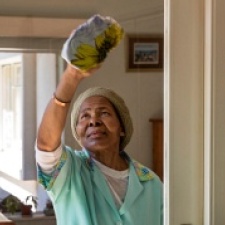Advanced Search
Search Results
170 results found
En la Ciudad de México y en las zonas urbanas de México, las mujeres representan el 42% y los hombres el 58% de la fuerza laboral (Tabla 1).1 A nivel nacional, la proporción de mujeres en México es levemente inferior, con un 39%. Entre 2013 y 2019, el empleo en México aumentó en más de 5 millones de...
Employment in India is overwhelmingly informal: 90 per cent of all workers are employed under informal arrangements nationally; in urban areas and in Delhi, the proportion is 80 per cent. This brief provides comparative data from 2011-12 and 2017-18 for informal workers in all India, and by urban...
This statistical snapshot of India's home-based workers offers data on the size of this workforce, age, sex, type of industry and more. Data presented in this brief are from the 2017-18 Periodic Labour Force Survey and the 2011-12 and 2004-2005 Surveys of Employment and Unemployment. All are...
This Brief provides statistics on the informal economy and categories of informal workers in Mexico. The data in this brief are based on the second quarter of the 2013 and 2019 Encuesta Nacional de Ocupación y Empleo (ENOE), a quarterly survey of the National Statistical Institute of Mexico, INEGI.
This brief details recent data on informal workers in Greater Accra, urban Ghana and Ghana overall, and looks at the data: by sex by occupational groups (domestic workers, home-based workers, market traders, street vendors and waste pickers) by status of employment by educational levels by age It...
This article is also available in English Portuguese
This brief contains estimates on informal workers in Bangkok and other urban centres in Thailand.
In 2013, 89 per cent of Malawi’s 5.5 million employed people were informally employed. Informal economy budget analysis (IEBA) explores the extent to which government budgets address the needs of informal workers. The IEBA in this brief focuses on Lilongwe, Malawi and specifically on the needs of...
This Legal Brief compares the Civil Law and Common Law systems to explore the recourses and remedies street vendors may have to to defend their rights and livelihoods from the abuse of public authorities.
Also available in: English Spanish
Videos / Slideshows / Audio
Millions of women work long hours, in dangerous conditions, for little pay. They are fighting for change, with the help of ILO Convention 189 on Decent Work for Domestic Workers. Watch this video to learn how.
Workers Education/Organizing Materials
This manual helps street vendors learn more about the regulations that govern public space and how to defend the right to work in public space. It describes successful actions taken by street vendor organizations. And it offers information to help you organize and negotiate with local government.
WIEGO Working Papers
Mike Rogan reviews how informal workers are taxed, why there is growing interest in taxing them, and whether they should be included in the tax net.



